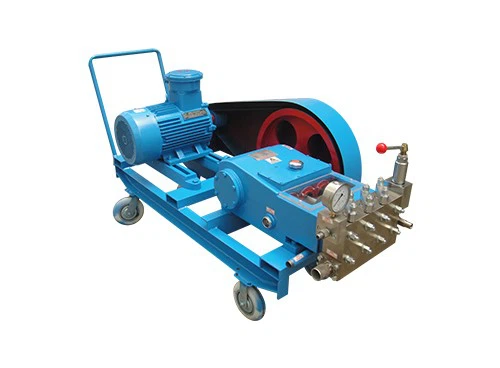Reasonable design and installation
1. Control the installation height: According to the performance parameters and actual working conditions of the pump, accurately calculate the allowable installation height of the pump, and ensure that the pump is installed below the highest allowable position to ensure sufficient pressure at the pump inlet. Generally speaking, the vertical distance from the center of the pump inlet to the suction liquid surface should be less than the allowable suction height of the pump.
2. Optimize the suction pipeline: Try to shorten the length of the suction pipeline and reduce unnecessary elbows, valves, filters and other pipe fittings to reduce pipeline resistance. At the same time, select a suitable inner diameter of the pipeline to ensure that the flow rate of the liquid in the pipeline is moderate, generally controlled at about 1.5-2.5m/s. In addition, ensure the sealing of the suction pipeline to prevent air from entering the pipeline.
Correct selection and use
1. Choose a suitable pump: According to the actual needs of the fire extinguishing system, select a Fire-fighting Pump with a suitable cavitation margin. Cavitation margin is an important indicator to measure the anti-cavitation performance of the pump. It should be ensured that the required cavitation margin of the pump under actual operating conditions is less than the effective cavitation margin provided by the device.
2. Avoid excessive flow: During the operation of the Fire-fighting Pump, the flow should be reasonably adjusted according to the actual water demand to avoid the pump from operating at a rate exceeding its rated flow. The flow can be controlled by installing devices such as flow control valves to ensure that the pump operates within an efficient and stable operating range.
3. Control liquid temperature: Try to avoid excessive water temperature in the fire water pool, and take measures such as shading and ventilation to reduce the water temperature. If conditions permit, the water can also be cooled to ensure that the liquid temperature is within the allowable operating range of the pump, generally not exceeding 40°C.
4. Ensure normal speed: Strictly operate at the rated speed of the pump, and do not increase the speed of the pump at will. If the flow or head of the pump needs to be changed, it should be adjusted in a reasonable way, such as using a variable frequency speed control device, rather than simply increasing the speed.
Strengthen maintenance
1. Regular inspection: Regularly check whether the impeller, pump casing and other parts of the pump are worn, corroded or blocked, and clean up debris in the impeller and suction pipe in time to keep the flow channel in the pump unobstructed. At the same time, check the sealing performance of the pump to ensure good sealing and prevent air from entering the pump.
2. Keep the water clean: Clean the fire water pool regularly to remove the mud, sand, and debris at the bottom of the pool to prevent impurities from entering the pump. If the water contains impurities or particles, a suitable filter can be installed on the suction pipe, but it is important to clean the filter regularly to prevent it from increasing the pipe resistance due to blockage.
3. Check and maintain the instrument: Regularly check and calibrate the instruments related to the pump, such as pressure gauges, thermometers, etc., to ensure that the instrument display is accurate, so as to promptly detect abnormal conditions during the operation of the pump, such as low inlet pressure, high liquid temperature, etc., and take appropriate measures to deal with them.

